SEO for E-commerce - A Beginner's Guide

SEO for Ecommerce: The Ultimate Traffic Magnet
I've seen it time and time again: a killer ecommerce site with lackluster traffic. It's like having a Lamborghini without any gas. That's where SEO comes in, folks. It's the high-octane fuel that'll turn your online store into a traffic-pulling powerhouse.
Now, I know what you're thinking. "Logan, isn't SEO just for blogs and news sites?" No! Ecommerce SEO is a whole different ball game, and it's one you need to master if you want to compete in today's cutthroat online marketplace.
Think about it: when was the last time you scrolled to page two of Google when shopping online? Exactly. That's why getting your products to rank is crucial. It's not just about being visible; it's about being the first thing shoppers see when they're ready to buy.
But here's the kicker: ecommerce SEO isn't just about stuffing keywords into your product descriptions. It's a delicate dance of on-page optimization, technical wizardry, and strategic content creation. Get it right, and you'll have customers flocking to your virtual shelves like bees to honey.
Technical SEO
HTTPS: Your Ecommerce Security Blanket
Let's talk HTTPS, folks. It's not just a fancy prefix – it's your ecommerce site's bulletproof vest.
Here's the deal: HTTPS encrypts all data between your customers' browsers and your server. Credit card info, personal details, the whole shebang. It's like a secret code that only you and your customers can crack.
 But here's the kicker: Google actually gives HTTPS sites a ranking boost. That's right, better security equals better SEO. It's a win-win, people. So if you haven't made the switch yet, what are you waiting for?
But here's the kicker: Google actually gives HTTPS sites a ranking boost. That's right, better security equals better SEO. It's a win-win, people. So if you haven't made the switch yet, what are you waiting for?
Optimize Your Site Structure for Easy Navigation
Let's talk site structure. This is crucial for ecommerce SEO success.
Your site structure needs to be logical and user-friendly. Start with your homepage as the central hub. From there, create clear categories and subcategories that make sense for your products.
Keep your structure as flat as possible. Aim for no more than three clicks to reach any product page. This ensures users can find what they're looking for quickly and easily.
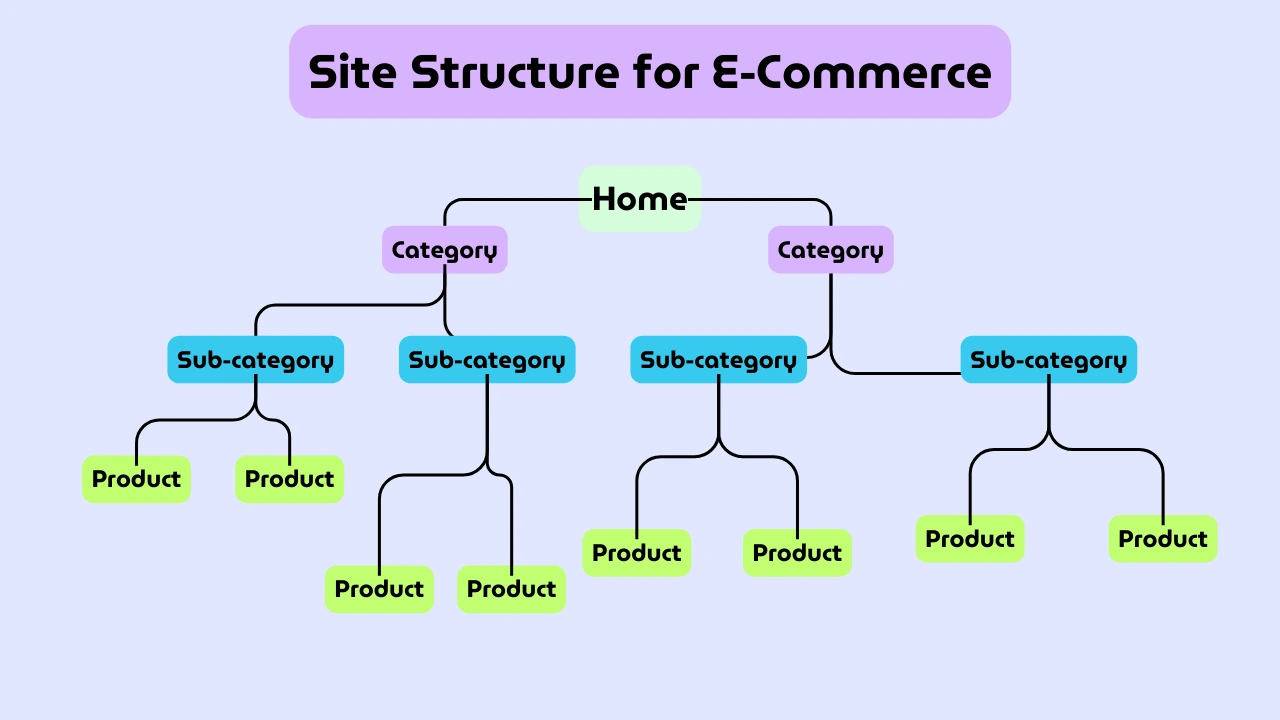 Internal linking is key. Link from broader category pages to specific products. This helps distribute link equity and allows search engines to better understand your site's hierarchy.
Internal linking is key. Link from broader category pages to specific products. This helps distribute link equity and allows search engines to better understand your site's hierarchy.
One the easiest ways to maintain clear site structure is with Decipher SEO’s topical authority map. It helps visualize and create hierarchal content structures that can be easily maintained and developed as your website expands. It can also help generate content at a large scale to help improve your SEO efforts.
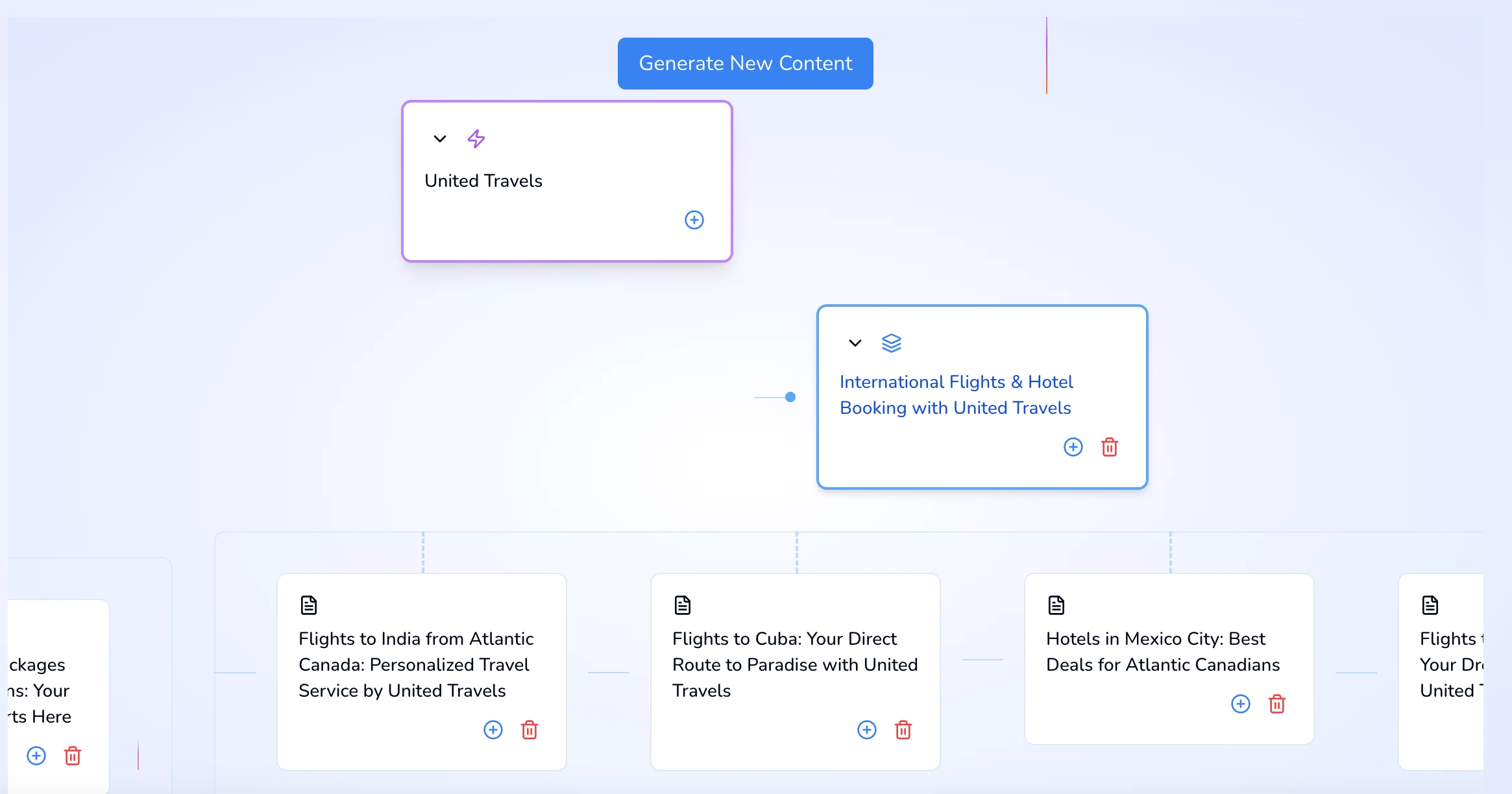 Pay attention to your URL structure. Keep it clean, descriptive, and consistent across your site. Use keywords where appropriate, but don't overdo it. A good URL structure might look like this: yourdomain.com/category/subcategory/product-name.
Pay attention to your URL structure. Keep it clean, descriptive, and consistent across your site. Use keywords where appropriate, but don't overdo it. A good URL structure might look like this: yourdomain.com/category/subcategory/product-name.
Remember to implement breadcrumbs. These help users understand where they are on your site and provide additional navigation options.
Don't forget about your site's search function. Make sure it's prominent and works well. A good search function can significantly improve user experience and keep customers on your site longer.
Mastering Faceted Navigation for SEO Success
Faceted navigation is a game-changer for ecommerce SEO, but it's a double-edged sword if not implemented correctly.
First off, faceted navigation helps users filter products based on attributes like size, color, or price. This improves user experience and can boost conversions. But here's the catch: it can create a ton of URLs, potentially leading to duplicate content issues.
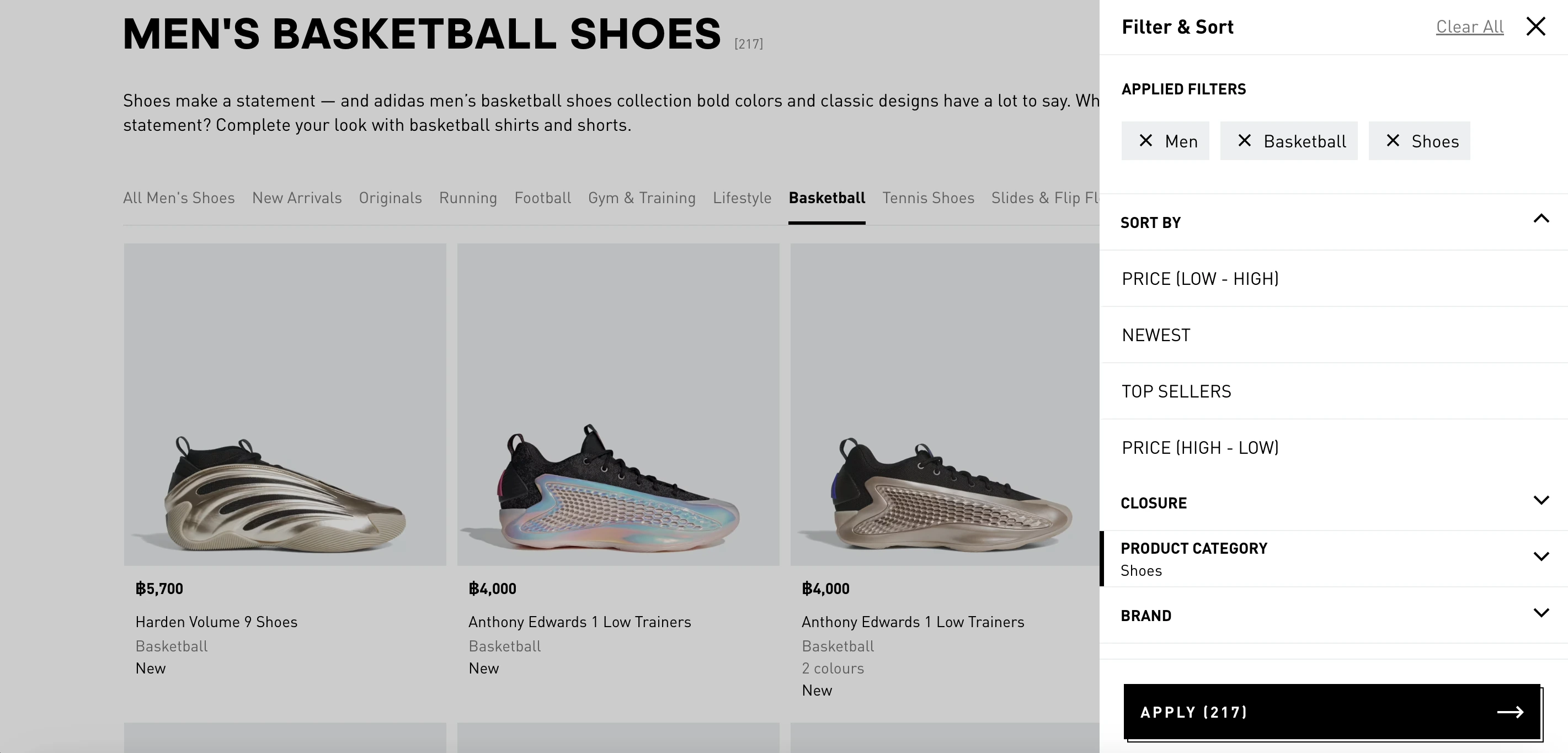 To avoid this, use rel="noindex" tags on filtered pages you don't want indexed. This tells search engines to ignore these pages. However, don't noindex everything. Some filtered pages might be valuable for SEO if they target specific long-tail keywords.
To avoid this, use rel="noindex" tags on filtered pages you don't want indexed. This tells search engines to ignore these pages. However, don't noindex everything. Some filtered pages might be valuable for SEO if they target specific long-tail keywords.
Now, let's talk about those pesky parameterized URLs. These can dilute your product page authority if not handled properly. The solution? Canonical tags. Use them to point all variations of a product page to the main URL. This consolidates ranking signals and avoids duplicate content issues.
Consider using URL rewriting to create cleaner, more SEO-friendly URLs for your faceted navigation. Instead of ugly parameter strings, you can have nice, readable URLs that both users and search engines will love.
Use your robots.txt file strategically. Block crawling of unnecessary parameter combinations to preserve your crawl budget for more important pages.
Keyword research for e-commerce websites
Keyword research is crucial for understanding customer search behavior and identifying relevant terms for your products. This understanding allows you to optimize your e-commerce site's structure, creating targeted category, subcategory, and product pages that effectively meet search demand. Let's explore the process.
Uncover Goldmine Keywords for Your Subcategory Pages
Let's dive into keyword research for your subcategory pages. This is where you can really make your ecommerce site shine in search results.
Start by brainstorming broad terms related to your subcategories. Then, use tools like Google Keyword Planner, Ahrefs, or SEMrush to expand on these ideas. Look for keywords with decent search volume and manageable competition.
 Don't just focus on product-specific terms. Think about informational queries your potential customers might use. For example, if you're selling running shoes, consider keywords like "best running shoes for flat feet" or "how to choose running shoes." These informational queries also perform as high intent keywords, they usually indicate a rather immediate desire for an item, solution or product.
Don't just focus on product-specific terms. Think about informational queries your potential customers might use. For example, if you're selling running shoes, consider keywords like "best running shoes for flat feet" or "how to choose running shoes." These informational queries also perform as high intent keywords, they usually indicate a rather immediate desire for an item, solution or product.
Analyze your competitors' subcategory pages. What keywords are they targeting? This can give you ideas and help you identify gaps in their strategy.
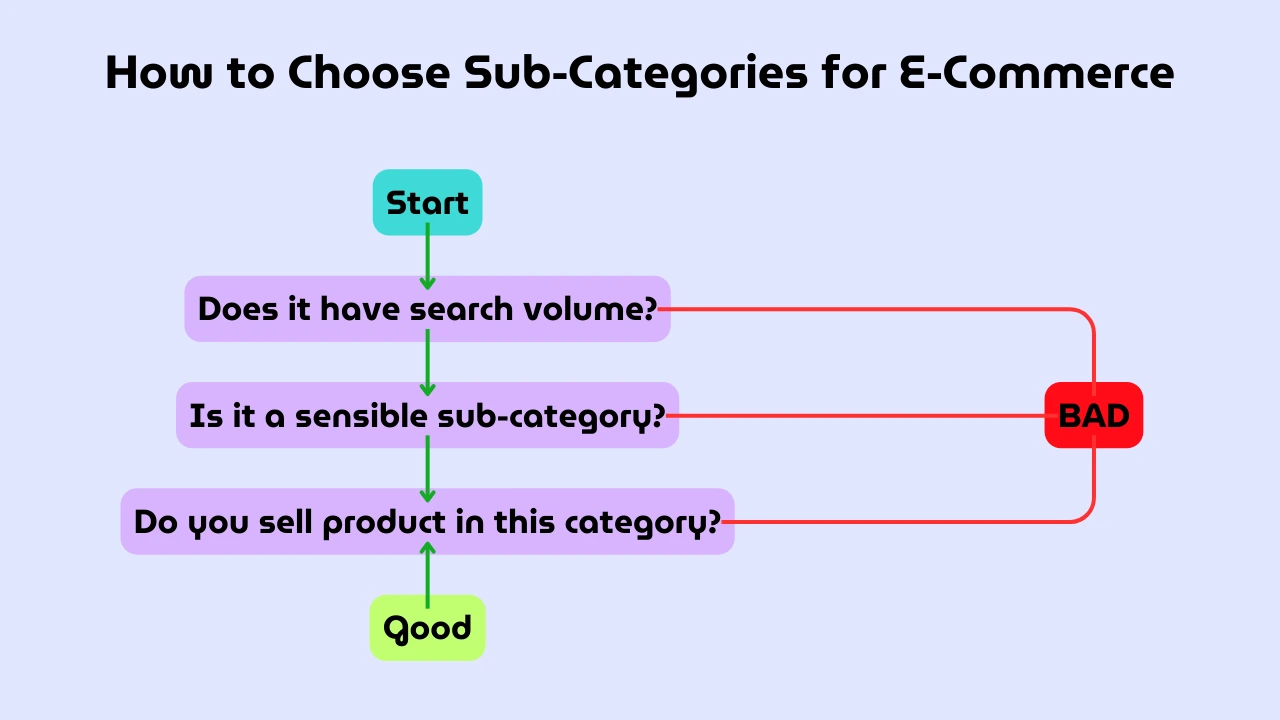 Consider long-tail keywords. These often have less competition and can drive highly targeted traffic to your site. But remember keep these subcategories relevant to the queries your customers are making. Driving traffic without intent misses the entire point for implementing SEO.
Consider long-tail keywords. These often have less competition and can drive highly targeted traffic to your site. But remember keep these subcategories relevant to the queries your customers are making. Driving traffic without intent misses the entire point for implementing SEO.
Unearth Winning Keywords for Your Product Pages
Keyword research for product pages is where the rubber meets the road in ecommerce SEO. Let's dive in.
Start with your product's basic details: brand, model, and key features. These are your seed keywords. Now, expand on these using tools like Ahrefs' Keywords Explorer or SEMrush's Keyword Magic Tool.
Look for specific, long-tail variations. For instance, if you're selling a camera, consider terms like "Canon EOS R6 mirrorless camera review" or "best settings for Canon EOS R6."
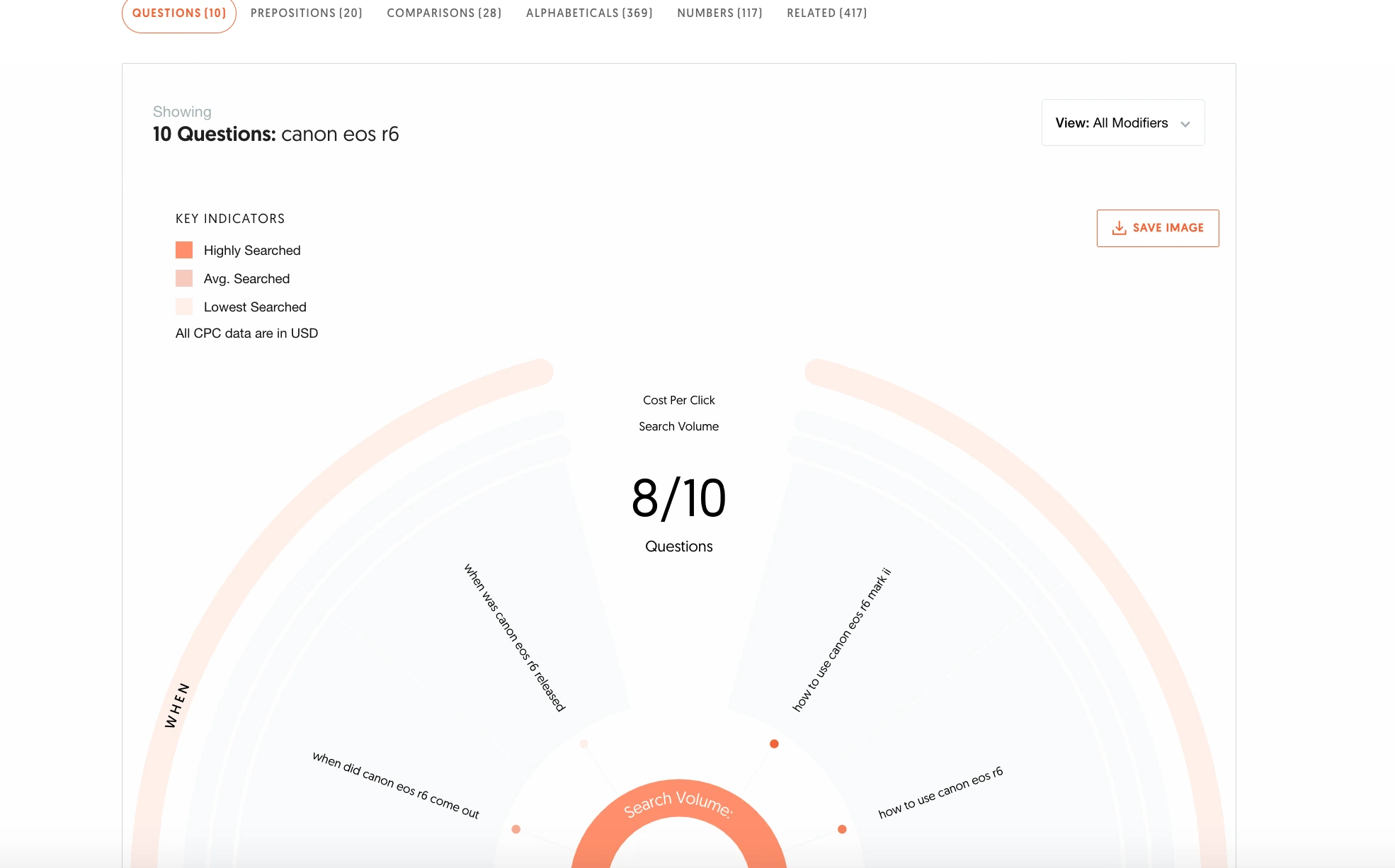 Don't ignore customer questions. Tools like Answer the Public can reveal what people are asking about your product. These make great targets for your product descriptions.
Don't ignore customer questions. Tools like Answer the Public can reveal what people are asking about your product. These make great targets for your product descriptions.
Analyze your competitors' product pages. What keywords are they ranking for? This can uncover opportunities you might have missed. Search intent is key. Focus on keywords that show buying intent, like "buy," "price," or "discount."
On-Page Optimization: Fine-Tuning Your E-commerce Engine
Once you've identified your target keywords, the next step is to optimize your on-page elements. This is where tools like Yoast SEO and Screaming Frog come into play, each offering unique advantages for e-commerce sites.
Yoast SEO, primarily known as a WordPress plugin, has become synonymous with on-page optimization. For e-commerce sites built on WordPress platforms like WooCommerce, Yoast offers invaluable features. It provides real-time feedback on your content's SEO-friendliness, analyzing factors such as keyword usage, meta descriptions, and readability. What makes Yoast particularly useful for e-commerce is its ability to generate XML sitemaps automatically, ensuring search engines can easily crawl and index your product pages.
Turbocharge Your On-Page SEO with Smart Templates
Let's talk efficiency, folks. When you're dealing with hundreds or thousands of product pages, manually crafting unique title tags, meta descriptions, and H1s for each one is a nightmare. Enter templates – your secret weapon for scaling on-page SEO.
This is where Decipher SEO can step in again, with our Bulk Product Description Generator. For the most part you can upload a CSV and we are able to generate your title, meta description, product description and offer you a view of what your content will look like before your export it.
Whip up a flexible template for each element. For titles, try something like "[Product Name] | [Key Feature] | [Brand]". Meta descriptions? Go with "[Short Product Description] - [USP] - Shop Now at [Store Name]".
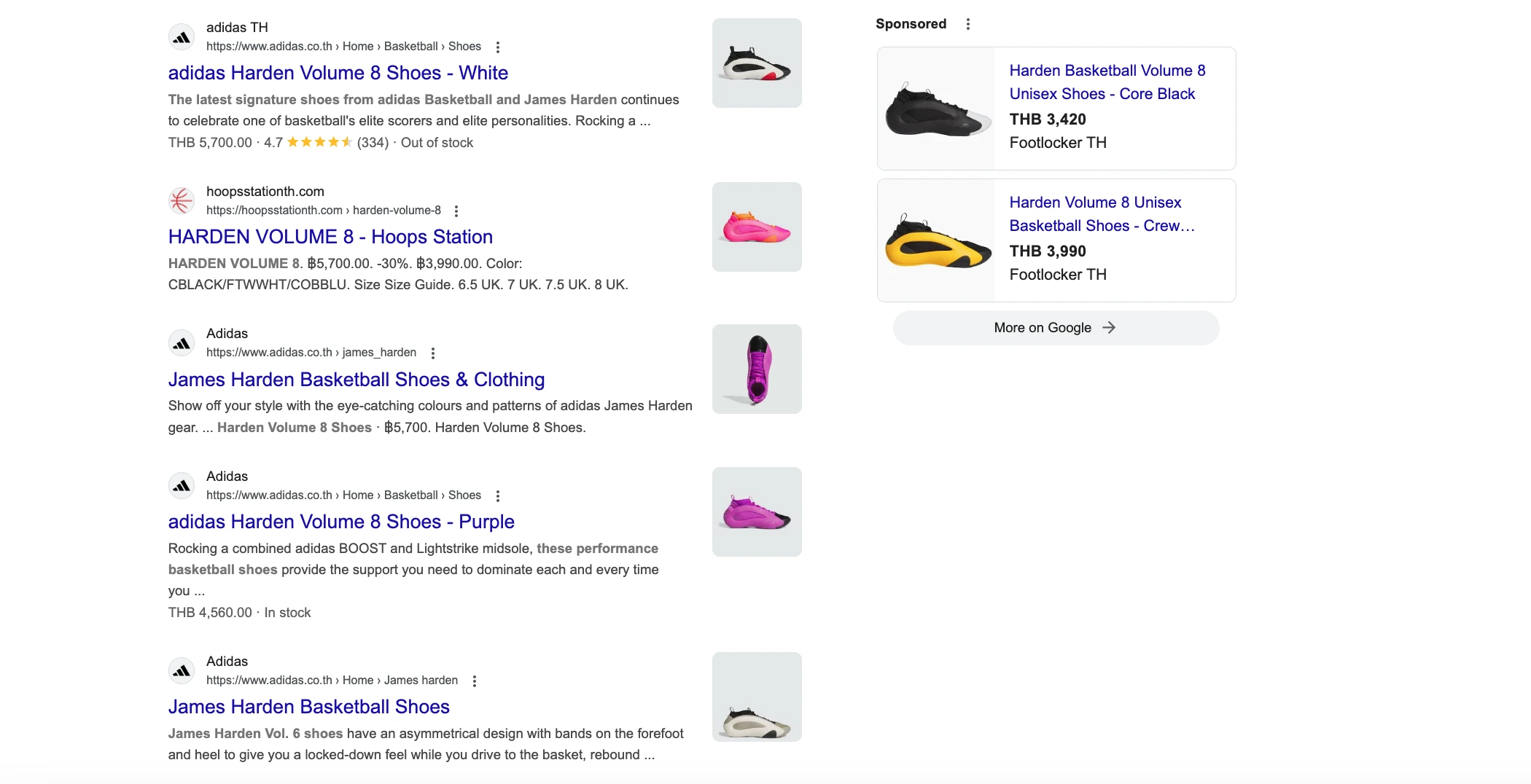 But here's the kicker: don't just set it and forget it. Use dynamic variables to pull in unique product attributes. This way, you're churning out optimized, distinct content for each page without breaking a sweat.
But here's the kicker: don't just set it and forget it. Use dynamic variables to pull in unique product attributes. This way, you're churning out optimized, distinct content for each page without breaking a sweat.
On our tool you’re able to specify the ecommerce site you use where it is Amazon or Shopify. Additionally, you get a set of options that you can include to generate the information you require for your product page.
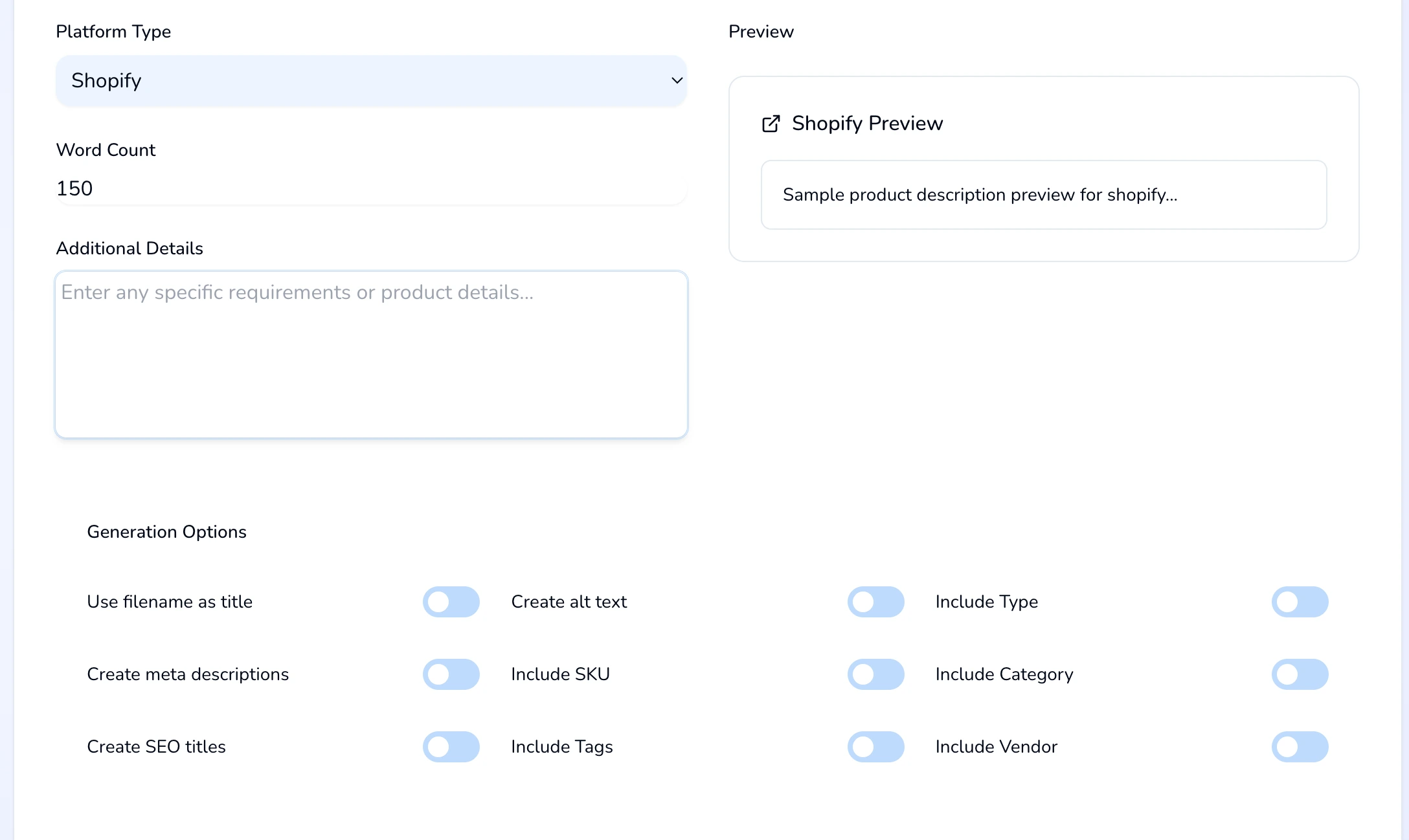 Remember, though: templates are a starting point, not the finish line. Regularly audit your top-performing pages and give them some extra TLC. A little manual tweaking can go a long way in pushing those money pages to the top of the SERPs.
Remember, though: templates are a starting point, not the finish line. Regularly audit your top-performing pages and give them some extra TLC. A little manual tweaking can go a long way in pushing those money pages to the top of the SERPs.
Crafting SEO-Friendly URLs for Ecommerce Success
When it comes to ecommerce SEO, I can't overemphasize the importance of simple, descriptive URLs. Throughout my career, I've witnessed numerous online stores sabotage their rankings with complex, unintelligible URLs. Let's avoid that pitfall.
The Golden Rule of URL Structure
My primary guideline is this: if a human can't immediately comprehend your URL, it needs improvement. We should steer clear of lengthy numeric strings and random character sequences. They serve no beneficial purpose in modern SEO.
I recommend aiming for a structure like this:
domain.com/category/subcategory
so based on the basketball sneaker examples our url structure might looks like this:
domain.com/basketball/nike/lebron-19
This format is clean, logical, and appealing to both users and search engines.
Keyword Usage and Character Separation
While including your primary keyword in the URL is beneficial, it's crucial not to force it. Keyword stuffing is an outdated tactic that can potentially harm your SEO efforts.
For word separation in URLs, I always use hyphens. They're the standard in URL construction and are preferred by search engines.
 URL Length and SERP Impact
URL Length and SERP Impact
I advise keeping URLs concise, ideally under 60 characters. Shorter URLs are more user-friendly and less prone to truncation in search results.
Remember, your URL is valuable real estate in the SERPs. A clear, concise URL can significantly impact click-through rates, potentially being the deciding factor between user engagement and disinterest.
Leveraging Keyword Research for Compelling Product and Category Descriptions
In my experience, unique product and category descriptions are crucial for both user engagement and search engine visibility. I always start with thorough keyword research to identify relevant terms and phrases that potential customers are using. Let our product description generator help you do this at scale.
If you have 100s or even 1000s of products on your store and you want to either upload them at once or edit them over time, this is just a daunting task. It can take weeks and $1,000s in opportunity cost to complete what is a pretty mundane task. Use the product description generator to help with the heavy lifting and generate in minutes from a CSV what would take you days.
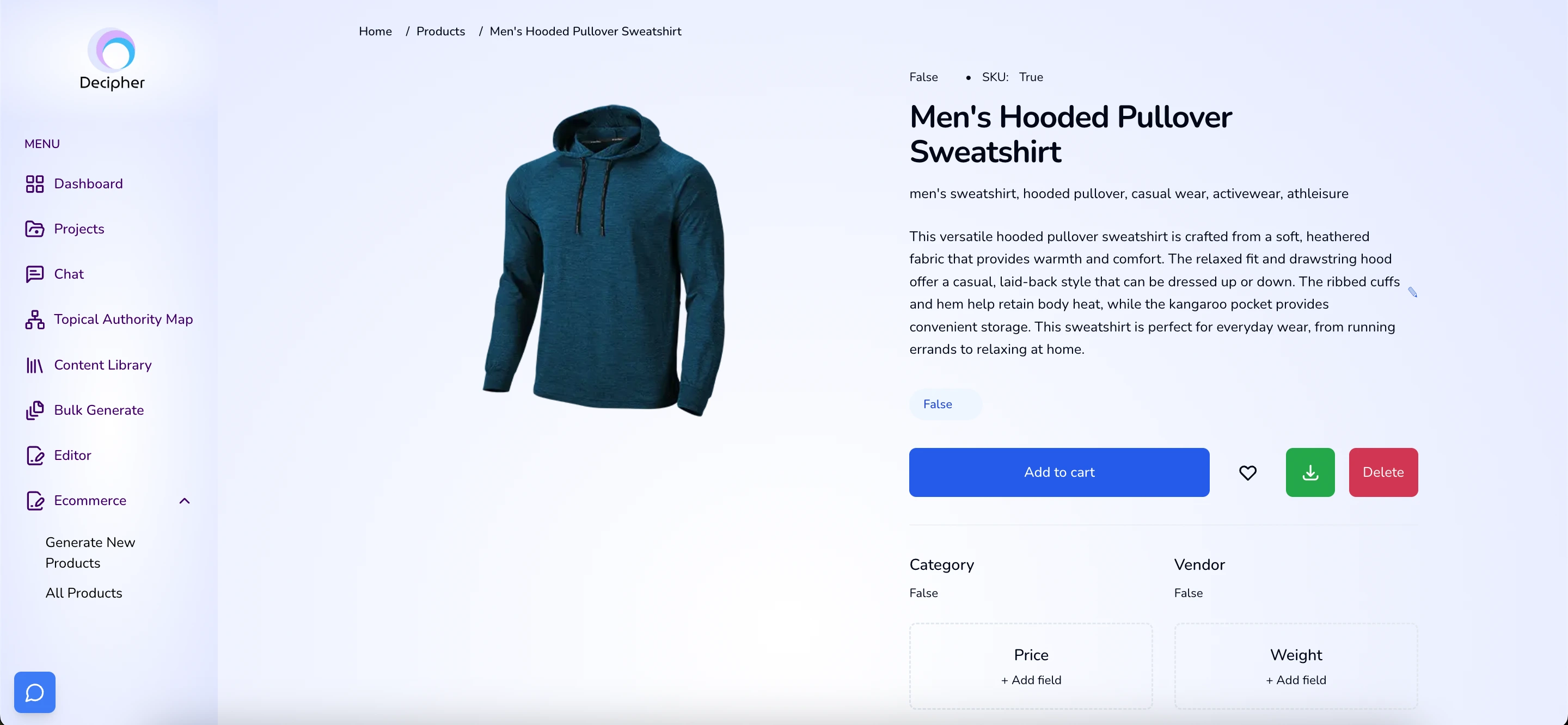 By incorporating these keywords naturally into your descriptions, you're not only helping search engines understand your content better, but you're also speaking the language of your customers. This approach can significantly improve your organic search visibility and conversion rates.
By incorporating these keywords naturally into your descriptions, you're not only helping search engines understand your content better, but you're also speaking the language of your customers. This approach can significantly improve your organic search visibility and conversion rates.
Link building for e-commerce sites
Securing backlinks for e-commerce sites can be challenging, as product and category pages often lack inherent linkable value for external websites. However, proven strategies exist. Beyond these, you can also pursue links to your homepage. Let's explore several link building techniques to incorporate into your e-commerce SEO efforts.
Use the “product feedback” technique to get featured
Want to get your exclusive product featured on "best of" lists? Try this product feedback strategy:
1) Find popular lists ranking products in your category.
2) Offer the list author your product in exchange for honest feedback.
3) If they like it, politely ask them to consider adding it to their list.
Since most authors link to featured products, this is a direct way to build valuable links to your product pages. To discover relevant lists that *don't* already include your product, search Google for "best [product category] -yourbrandname".
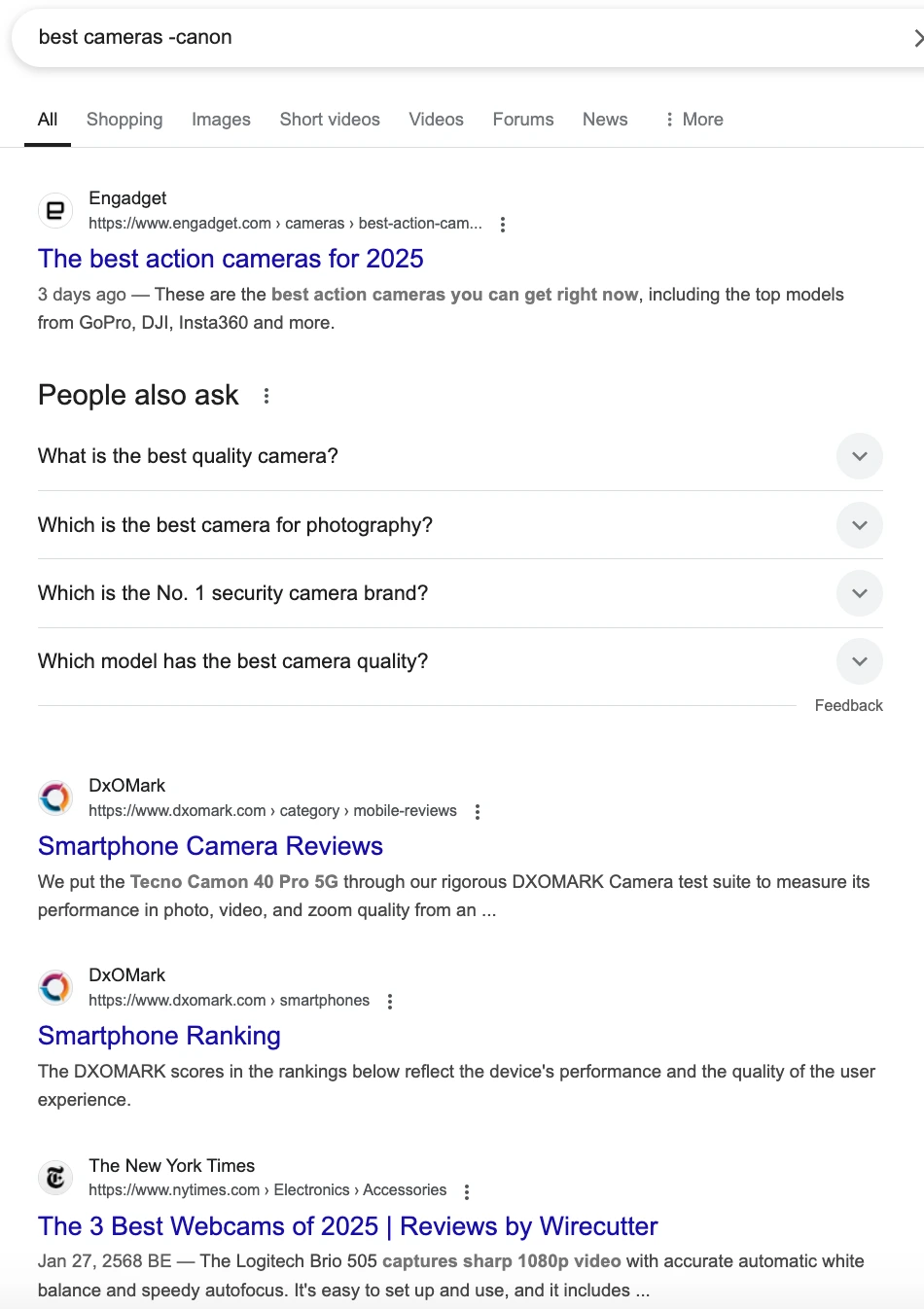 Content marketing for e-commerce
Content marketing for e-commerce
In the competitive world of ecommerce, captivating your audience is paramount. Through valuable, relevant, and engaging content, you can boost your online store's visibility, cultivate strong customer relationships, and ultimately, increase sales.
Let's explore some key content marketing priorities for ecommerce success.
Unearthing Commercial Investigation Keywords for Impactful Blog Content
In my years of experience, I've found that targeting commercial investigation keywords with blog posts is a goldmine for ecommerce SEO. These are the queries potential customers use when they're close to making a purchase decision but need a bit more information.
I always start by brainstorming questions our customers might ask before buying. Then, I use tools like Answer the Public or Ahrefs' Questions report to expand on these ideas. I look for phrases like "best [product category] for [specific use]" or "[Product A] vs [Product B]".
It's crucial to analyze the search intent behind these keywords or get the assistance of AI to help analyze the intent of the keywords. Are users looking for comparisons, reviews, or in-depth guides? This insight helps me craft content that truly meets their needs.
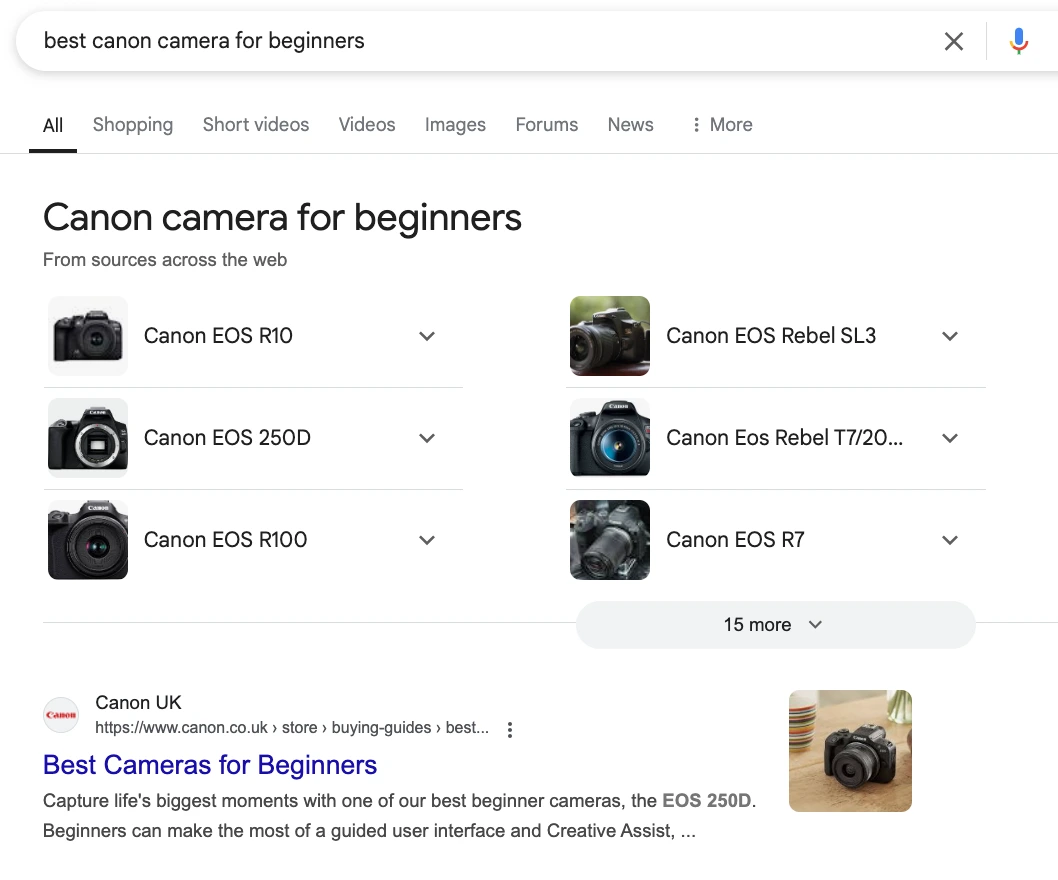 Keywords like "how to clean a camera" are ineffective because users aren't looking to buy. However, "how to fix a broken camera" can be more successful. Since most headphones are difficult to repair, searchers might ultimately decide that purchasing new ones is the easiest option.
Keywords like "how to clean a camera" are ineffective because users aren't looking to buy. However, "how to fix a broken camera" can be more successful. Since most headphones are difficult to repair, searchers might ultimately decide that purchasing new ones is the easiest option.
Remember, the goal here isn't just to drive traffic, but to capture potential customers at a critical point in their buying journey. By providing valuable, unbiased information, we can build trust and guide them towards our products naturally.
Harnessing Product-Led Content to Drive Ecommerce Traffic
In my experience, product-led content is a powerful tool for attracting customers to ecommerce sites. I've seen it work wonders time and time again.
When I create product-led content, I focus on solving real problems that our target audience faces. For instance, if we're selling kitchen appliances, I might create a comprehensive guide on "How to Choose the Perfect Blender for Your Needs." This approach allows me to naturally showcase our products while providing genuine value to potential customers.
I always ensure that this content is informative, engaging, and not overly salesy. The goal is to position our products as solutions, not to push for an immediate sale.
I've found that incorporating customer stories, product comparisons, and practical tips can significantly boost the effectiveness of this content. It's all about building trust and demonstrating expertise in our product niche.
Maximizing Product Image SEO for Enhanced Click-Through Rates
When it comes to ecommerce SEO, I've found that optimizing product images is often an overlooked goldmine. Let me share my approach to image optimization that has consistently driven more clicks and conversions.
First and foremost, I always focus on image quality. High-resolution, clear images are non-negotiable. They not only look better but also convey professionalism and trust to potential customers.
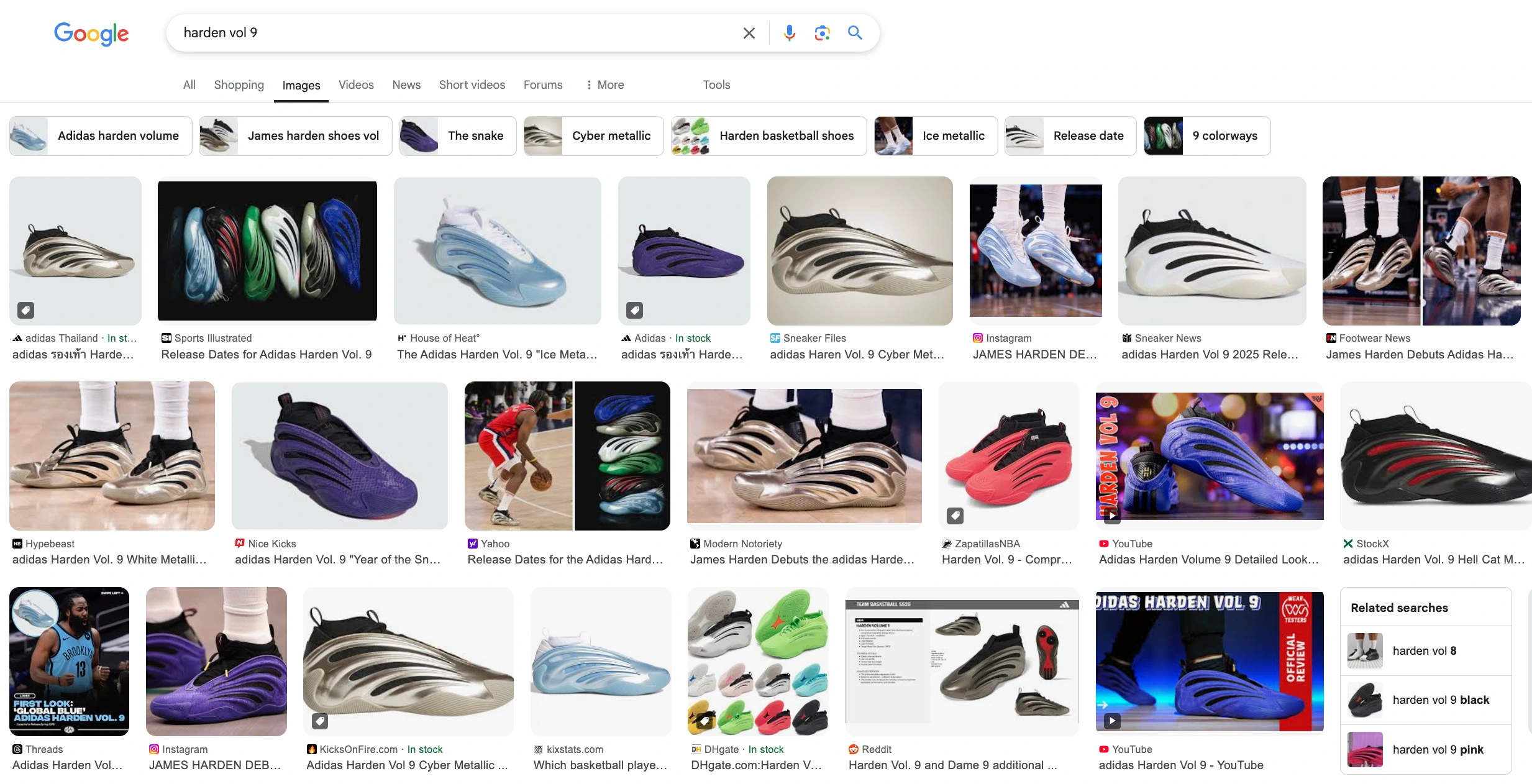 Next, I pay close attention to file names. Instead of generic "IMG_1234.jpg", I use descriptive, keyword-rich names like "red-leather-crossbody-bag.jpg". This helps search engines understand what the image is about.
Next, I pay close attention to file names. Instead of generic "IMG_1234.jpg", I use descriptive, keyword-rich names like "red-leather-crossbody-bag.jpg". This helps search engines understand what the image is about.
Alt text is another crucial element. I craft unique, descriptive alt text for each image, incorporating relevant keywords naturally. This improves accessibility and provides context for search engines.
Image size and format are key for site speed. I compress images without sacrificing quality and use next-gen formats like WebP every single time. A fast-loading site is crucial for both user experience and SEO. You need a fast website to rank that is why I discourage our readers and customers to avoid template websites like Squarespace and WIX because you have such limited control over the website’s speed optimization.
Lastly, I implement structured data for product images. This can help our products stand out in search results with rich snippets, potentially increasing click-through rates.
Ecommerce SEO mistakes to avoid
Here are a few examples of common issues that can affect ecommerce websites and hurt rankings.
Not including breadcrumbs – Visitors (and Google) find breadcrumbs on ecommerce websites useful.
Forgetting to add schema markup – Adding schema can help you win rich snippets.
Indexing low-quality pages – Indexing ecommerce filters or search pages that don’t add any value.
Keyword stuffing – Repeatedly mentioning your keywords on your website.
Blocking key pages of your website – Sometimes,
noindextags or “Disallow” directives in robots.txt can be added by mistake, meaning pages don’t show in Google.Having a slow site - Your customers won’t like a slow site and it could impact conversions if you don’t optimize for site speed, especially if they are browsing your site on a mobile device
Speed: The Secret Weapon of E-commerce SEO
In the fast-paced world of online shopping, site speed can make or break your e-commerce success. Slow-loading pages not only frustrate users but also negatively impact your search rankings. This is where tools like Google PageSpeed Insights and GTmetrix become indispensable.
Google PageSpeed Insights provides a comprehensive analysis of your site's loading speed on both mobile and desktop devices. What makes it particularly valuable for e-commerce is its ability to simulate loading times on various network conditions, giving you insights into how your site performs for users with slower internet connections. The tool also provides specific recommendations for improvement, from optimizing images to leveraging browser caching.
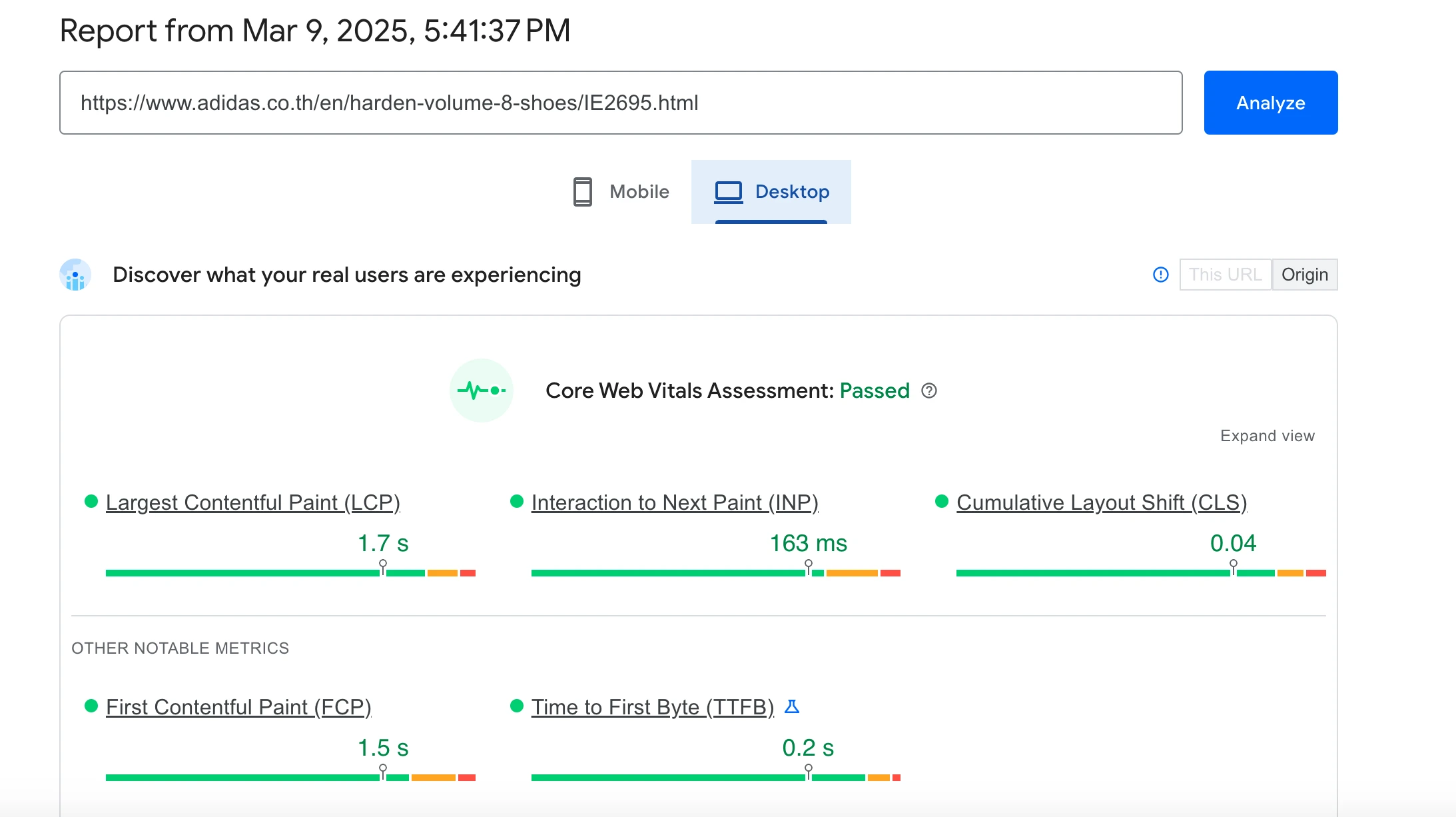 GTmetrix takes speed analysis a step further by providing a more detailed breakdown of your site's performance. It offers waterfall charts that show exactly how long each element on your page takes to load, helping you identify bottlenecks in your site's performance. For e-commerce sites with complex product pages featuring multiple images and dynamic elements, this level of detail can be invaluable in optimizing load times.
GTmetrix takes speed analysis a step further by providing a more detailed breakdown of your site's performance. It offers waterfall charts that show exactly how long each element on your page takes to load, helping you identify bottlenecks in your site's performance. For e-commerce sites with complex product pages featuring multiple images and dynamic elements, this level of detail can be invaluable in optimizing load times.
But speed optimization isn't just about improving user experience; it's also about enhancing your SEO. Google has made it clear that site speed is a ranking factor, particularly on mobile devices. By using these tools to improve your site's performance, you're not only providing a better shopping experience but also boosting your chances of ranking higher in search results.
Measuring Success: Analytics and Reporting for E-commerce SEO
All the optimization in the world means little if you can't measure its impact. This is where analytics and reporting tools come into play, with Google Analytics and Google Search Console leading the pack.
Google Search Console, offers invaluable insights specifically for SEO. It provides data on your site's search performance, including which queries are driving traffic to your site, your average position for specific keywords, and any technical issues that might be impacting your search visibility. For e-commerce sites, the ability to submit sitemaps and monitor indexing status is crucial, especially when launching new product pages or categories.
I primarily use Google Search Console to understand the websites I work on, it presents CTRs and Impressions and Clicks in a way that is invaluable to creating a prosperous business.
Putting It All Together: A Holistic Approach to E-commerce SEO
While each of these tools offers powerful capabilities on its own, the true magic happens when you use them in concert. By combining insights from keyword research, on-page optimization, backlink analysis, speed optimization, and analytics, you can create a comprehensive SEO strategy that drives real results for your e-commerce business.
Remember, SEO is not a one-time effort but an ongoing process of optimization and refinement. Regularly auditing your site with tools like Screaming Frog, monitoring your backlink profile with Moz or Majestic, and staying on top of your site's performance with Google Analytics and Search Console will help you stay ahead of the competition in the ever-evolving world of e-commerce SEO.
As you embark on your SEO journey, consider leveraging AI-powered SEO content writing to create engaging and optimized product descriptions at scale. This can be a game-changer for large e-commerce sites with extensive product catalogs.
Additionally, don't overlook the importance of comprehensive website content optimization. While product pages are crucial, creating informative category pages and blog content can help you target broader keywords and establish your site as an authority in your niche.
The world of e-commerce SEO is constantly evolving, with search engines regularly updating their algorithms and new tools emerging to meet changing needs. Stay curious, keep learning, and don't hesitate to seek expert advice when needed. With dedication and the right tools at your disposal, you can turn your e-commerce site into a powerhouse of organic traffic and sales.
At Decipher SEO, we understand the unique challenges and opportunities that e-commerce SEO presents. Our team of experts leverages cutting-edge tools and AI-driven strategies to help online stores like yours achieve lasting SEO success. From automated internal linking to topical cluster planning, we offer solutions designed to boost your e-commerce SEO efforts and drive meaningful results for your business.
Remember, in the world of e-commerce, visibility is everything. By investing in the right SEO tools and strategies, you're not just improving your search rankings; you're opening the door to countless potential customers eager to discover your products. So, dive in, explore these tools, and watch as your e-commerce site transforms into a beacon for shoppers in the vast digital marketplace.
